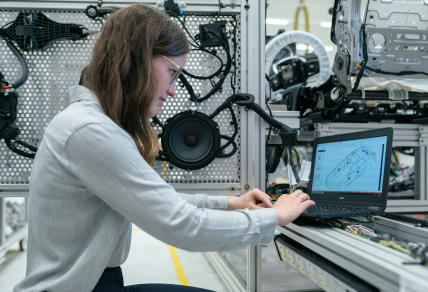1. What are the most prevalent forms of renewable energy technologies?
Answer:
The most prevalent forms of renewable energy technologies are:
Solar energy (photovoltaic panels, solar thermal)
Wind energy (onshore and offshore wind turbines)
Hydropower (dams, run-of-river systems, tidal and wave energy)
Geothermal energy (direct heating, geothermal power plants)
Biomass energy (wood, agricultural waste, biogas)
Ocean energy (tidal, wave, and ocean thermal energy)
2. What are the advances in solar energy technologies in the past few years?
Answer:
Some of the latest developments in solar energy are as follows:
Perovskite solar cells: These are much cheaper and more efficient than traditional silicon-based cells.
Bifacial solar panels: These are capable of absorbing sunlight on both sides for more efficiency.
Solar skins and transparent solar panels to be used for windows and facades of buildings.
Energy storage solutions such as lithium-ion and solid-state batteries for better energy storage and management.
3. What are perovskite solar cells, and why are they important?
Answer:
Perovskite solar cells: a new family of photovoltaic cells formed from a type of crystal known as perovskite. They are valuable because:
Perovskite solar cells have a lower manufacturing cost and more straightforward process as compared to conventional silicon cells.
They have much higher efficiency factors and can also be embedded within flexible or clear materials.
Development is still taking place to better their stability to make them competitive with silicon-based solar panels.
4. How is offshore wind technology evolving?
Answer:
Offshore wind technology has made tremendous strides, including:
The development of larger and more powerful turbines with capacities exceeding 10 MW per turbine.
Floating wind farms that can be installed in deeper waters where traditional fixed turbines aren’t feasible.
Advances in maintenance and monitoring technologies, such as drones and robots for turbine upkeep.
More efficient grid integration technologies to handle offshore wind power.
5. How effective are today’s wind turbines?
Answer:
Contemporary wind turbines have efficiencies as high as 35-45% under the best conditions; in ideal conditions, some achieve as much as 50%. The technological changes of bigger blades and improved materials enhanced the capacity and efficiency of the turbines. Wind turbines offshore tend to be much more efficient, mainly because there are stronger, more consistent winds out at sea.
6. What is floating wind technology?
Answer:
Floating wind is the technology mounting wind turbines to floating platforms, where these are anchored to the seafloor, and this offers the possibility to install turbines deeper in the waters than would be practical for conventional fixed-bottom structures. Floating wind farms open wide new areas of generation for offshore wind energy.
7. What are the most recent developments in energy storage for renewable sources?
Recent developments in energy storage include:
Solid-state batteries that provide greater energy density, faster charging rates, and enhanced safety compared to lithium-ion.
Flow batteries which can store high amounts of energy for long durations and are excellent for grid-scale applications.
Thermal energy storage systems, like molten salt, that use excess solar or wind energy in the form of heat to be utilized later.
Hydrogen storage is used for long-term energy storage, where surplus electricity is converted into hydrogen via electrolysis.
8. In what way does energy storage increase the reliability of renewable energy?
Answer:
Energy storage helps in balancing the variable nature of renewable energy by storing excess energy generated during periods of high generation (for example, sunny or windy days) and releasing it when generation is low (for example, cloudy or calm days). This ensures that there is always a constant supply of energy with reliability, making the grid more stable.
9. What is green hydrogen, and how does it work?
Answer:
Green hydrogen is renewable energy-based hydrogen, produced using electrolysis in a process which splits water by electricity. Therefore, green hydrogen is a clean fuel that can be used in multiple sectors, which include:
Transportation (fuel cells for vehicles)
Industry (steel, chemicals, and refining)
Energy storage (storage of excess renewable energy)
10. How may green hydrogen decarbonize the industries?
End
Green hydrogen will allow the decarbonization of industries in applications where electrification is hard to implement, including:
High-temperature industrial processes, such as cement and steel production
Long-haul transportation, including trucks, ships, and planes
Production of ammonia for fertilizers
Hydrogen can be used in fuel cells or combusted as a clean fuel. Thus, it presents an opportunity to develop carbon-neutral sources of energy, different from conventional energy.
11. What is geothermal energy, and how is it being developed?
Geothermal energy harnesses the heat of the Earth’s core to produce electricity or direct heating. Developments include:
Improvement in Enhanced geothermal systems (EGS) that provide energy from the hot dry rocks.
Geothermal heat pumps in buildings for both heating and cooling.
New methods of drilling into the Earth more deeply and hence efficiently extracting geothermal energy.
12. What role can geothermal energy play in a renewable energy future?
Answer:
Geothermal energy is a reliable, continuous, and low-carbon source of power. It can be used for:
Baseload power (generation at a constant level regardless of the weather)
District heating systems, which can power whole neighborhoods or industrial zones
Low environmental impact compared to fossil fuel-based power plants
13. What are the most recent developments in bioenergy?
Answer:
Advanced biofuels, such as algae-based biofuels, have higher energy content and can be used in transportation and aviation.
Waste-to-energy technologies that produce biogas or electricity by converting agricultural, industrial, or municipal waste; Biorefineries: They are designed for the conversion of biomass into the wide variety of products including materials, fuels and chemicals.
14. How is biomass energy used sustainably?
Answer:
Biomass energy can be used sustainably by ensuring that the biomass comes from renewable sources, such as sustainably managed forests or agricultural waste. In addition, technologies like biochar (carbon sequestration through biomass) can help mitigate carbon emissions. Sustainable practices ensure that biomass does not lead to deforestation or compete with food production.
15. What is the role of smart grids in renewable energy?
Answer:
Smart grids make use of digital communication and automation in the management of electricity flow and integration of renewable energy sources more efficiently. They help in:
Balancing supply and demand in real-time
Allowing for grid flexibility in order to distribute renewable energy across the grid more effectively
Improving grid stability through rapid response to fluctuations in renewable energy generation
16. How are renewable energy systems integrated with AI and machine learning?
AI and machine learning are being applied to optimize renewable energy systems, including:
Accurate forecasting of demand and supply of energy
Predictive maintenance to improve performance of solar panels and wind turbines
Adjusting energy storage and distribution according to the fluctuating nature of renewable energy inputs
17. How is wind energy used for desalination?
Answer:
Wind energy can be used to power desalination plants that convert seawater into freshwater. Renewable energy sources such as wind and solar can be used to decarbonize desalination processes, thus providing an environmentally friendly solution to the increasing global water scarcity problem.
18. What are the environmental benefits of renewable energy?
Answer:
Renewable energy has the following environmental benefits:
Reduces greenhouse gas emissions, which help combat climate change
Lower air and water pollution compared to fossil fuel-based power generation
Minimal land use and low impact on biodiversity for technologies like wind, solar, and geothermal
19. What role do renewable energy technologies play in climate change mitigation?
Answer:
Renewable energy technologies are central to reducing the world’s reliance on fossil fuels, thus:
Decreasing carbon dioxide (CO2) emissions from the energy sector
Helping nations meet Paris Agreement climate goals
Accelerate transition to a net-zero carbon economy by 2050
20. What are the economic advantages of renewable energy?
Answer:
The economic advantages of renewable energy are:
Job creation in the manufacture, installation, and maintenance of renewable energy technologies
Reduced dependence on imported fossil fuels; hence, it leads to enhanced energy security
Long-term savings through reduced energy bills and clean sources of energy
21. Can renewable energy replace fossil fuel completely?
Answer:
Although renewable energy can significantly reduce dependence on fossil fuels, it is a challenge to achieve an absolute transition in a cost-effective manner due to constraints such as energy storage, grid infrastructure, and intermittency. Still, with technological advance and proper policy support, renewable energy can fulfill a large part of the world’s energy needs soon.
22. How much potential is there for the use of renewable energy in transportation?
Answer:
Renewable energy is going to play a prominent role in the decarbonization of transportation that includes:
Electric vehicles (EVs) based on clean energy
Biofuels for the aviation and heavy transport sectors
Hydrogen fuel cells for long-range and heavy-duty use
As electricity becomes greener, transportation will be able to switch to an entirely renewable power source.
23. How do solar panels increase their efficiency?
Answer:
Advancements in bifacial panels capture sunlight from the front and rear sides of a panel
Tandem solar cells combine multiple materials to enhance the absorption of sunlight
Light-trapping technologies that enhance light absorption
24. What are the recent trends in wind energy technology?
Answer:
Recent trends in wind energy technology include:
Larger turbine blades and taller towers to capture more wind
Offshore wind farms are becoming more common due to higher energy yields
Advanced blade designs that reduce noise and improve efficiency
25. How does renewable energy impact job creation?
Answer:
Wind, solar, and energy storage renewable energy sectors are the biggest generators of jobs in these areas:
Manufacturing (panels, turbines, batteries)
Installation and maintenance
Research and development
26. What are some of the scaling challenges for renewable energy technologies?
Response:
Challenges include:
Infrastructure cost: High front-end costs associated with infrastructure
Intermittent sources: In the case of solar and wind
Grid integration and upgrading to accommodate renewables
Limited energy storage capacity
27. Can renewable energy be scaled in developing countries?
Response:
Yes, renewable energy can be scaled in developing countries, especially through:
Off-grid solar systems for rural electrification
Affordable wind and solar power for industrial and residential use
Microgrids for localized energy production
28. What is the role of government policies in advancing renewable energy?
Answer:
Government policies are crucial in:
Providing subsidies and incentives for renewable energy adoption
Enforcing carbon pricing and emissions reduction targets
Investing in research and development to drive innovation
29. What is the outlook for renewable energy technologies?
Answer:
Renewable energy’s future prospects are bright and positive, and are expected to progress in all aspects, such as:
Increasing efficiency
Reduction in costs
Grid integration
Energy storage
As time goes by, renewable energy will become more affordable, reliable, and accessible.
30. What is the individual contribution to renewable energy adoption?
Answer:
The individuals can contribute through:
Solar panels or small wind turbines installation at home
Promotion of clean energy policies and companies
Reducing energy consumption and investing in energy-efficient technologies
Transitioning to electric vehicles and renewable-powered heating/cooling systems
Conclusion
Renewable energy technology is changing the global energy system landscape rapidly. Continued innovations in solar, wind, geothermal, energy storage, and other renewable sources are bringing us closer to a sustainable and carbon-neutral future.





